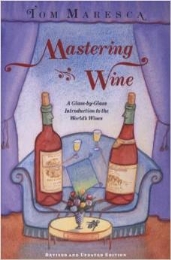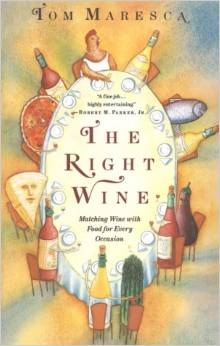Who says I’m too old to believe in Santa Claus? Taub Family Selections just provided four samples of Fonterutoli’s newly released best wines for me to try, and that’s one of the nicest Christmas packages I’ve received in a long time. Vicoregio 36, Castello Fonterutoli, Badiòla – all 2017 vintage, all Chianti Classico Gran Selezione – and 2018 Siepi IGT are the bottles in question, and opening them was a big holiday treat.
Fonterutoli is the Mazzei family. That tiny hamlet in the heart of the Chianti Classico country has been the family seat since the middle of the 15th century, and the Mazzei have been deeply involved in Tuscan wine since at least 1435.
That adds up to many generations of wine know-how and experience, which the present generations have used to keep their wines at the forefront of Tuscan production. The Mazzei have steadily pushed for the improvement of Chianti Classico: They were deeply involved in the Chianti Consortium’s Chianti 2000 project for instance, one of whose results shows in the 36 clones of Sangiovese that make up Vicoregio. And Siepi was one of the earliest – for my palate one of the most successful – of what used to be known as supertuscans, the wines that are credited with pushing Tuscan (and subsequently all Italian) winemaking into the modern age.
(A necessary aside: I’m very happy that “supertuscan” as a phrase is fading from use. I’ve always thought that the real supertuscans are the wines made with indigenous varieties, chief of them Sangiovese: Brunello, Carmignano, Chianti Classico, Chianti Rufina, Vino Nobile di Montepulciano. Wines made from “international” varieties can be very fine, but they are rarely truly Tuscan in character. I would rate Siepi as one of the few exceptions to that, insofar as Merlot – its “international” component – has shown itself to be one of those varieties that have adapted best to the soils and climates of the Chianti Classico zone.)
I have been a steady admirer of Fonterutoli wines for several decades now, and there was nothing in these four bottles to change my opinion. With the proviso that all are very young and showing a small touch of bottle shock, they all impressed with their separate but equal expressions of their grapes and terroirs, and all promised interesting evolutions as they age.
.
Vicoregio 36, Chianti Classico Gran Selezione 2017
.
This wine originates in the Mazzei’s southernmost vineyards, in the commune of Castelnuovo Berardenga, and it reflects the huskiness of the wines of that area. It shows a rich, grapey nose, earthy, and a touch smoky (that may be the barrels), with a hint of dried figs. These elements all follow through on the palate. A smooth, round, mid-weight wine, with excellent Sangiovese character and a big, dry-fruit finish. Very fine for immediate drinking or keeping for five or more years.
.
Castello Fonterutoli, Chianti Classico Gran Selezione 2017
.
This is the family’s flagship wine, sourced entirely from the home vineyards surrounding the village of Fonterutoli. It displays the same aroma and flavor characteristics as the Vicoregio but feels lighter in body and higher in tone, simply more elegant overall – very typical of the best Chiantis from the heart of the zone. I tasted a wonderful zing of wild cherry in the mouth and the finish. An excellent wine, for immediate drinking or keeping for five to ten years.
.
Badiòla, Chianti Classico Gran Selezione 2017
.
The vines that make this wine grow in Radda at 570 meters, the highest altitude of any of the Fonterutoli wines. They are 100% Sangiovese, and they fill the wine with wild cherry notes from aroma through palate to finish. The other aroma and flavor components are like those of the two preceding wines, only more so, with an extremely long finish. This is about as elegant as a Chianti gets. Very, very fine: good drinking now but structured, I would guess, for a much longer haul.
.
Siepi, IGT Toscana 2018
.
Composed of 50% Sangiovese and 50% Merlot, this is a darker wine in all respects than the Chianti Classicos. It’s rounder and softer – smells and tastes of mulberry. On the palate, that mulberry merges nicely with the Sangiovese cherry. The wine is big and soft in the mouth (the Merlot showing its stuff), very composed and balanced. For all the Merlot, it shows some genuine Tuscan character in its fine acid balance. Truly, a one-of-a-kind wine, unique and fine.
.
To sum up: Siepi is a kind of wine I admire, but the three Chiantis are the kind of wines I love. Can’t help it: I’m old-fashioned – so let me wish you an old-fashioned Merry Christmas and a very Happy post-Covid New Year!








Leave a comment